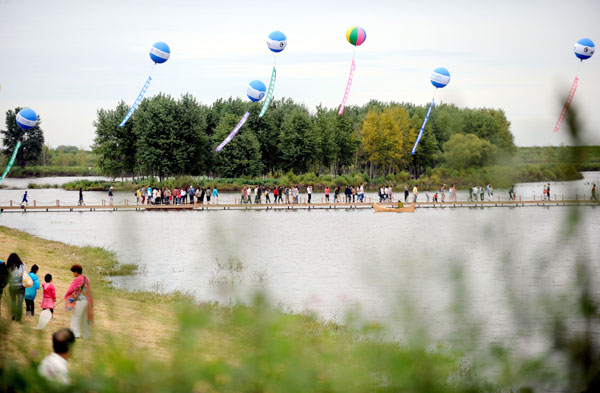New Leaders Target Environment
China Daily, March 10, 2013 Adjust font size:
Cao Yushan is a quiet man. The former hydrology station worker, now in his mid-60s, is usually happy to let other people do the talking and it's only when his favorite topic arises that he opens up. Mere mention of the Liaohe River in Liaoning Province will prompt a barrage of stories as Cao becomes animated.
Having spent three decades working at the river's hydrology station, Cao watched the water deteriorate from clean in the 1980s to turbid and fetid in the 1990s. However, in recent years the waters have gradually become clearer again as a result of rigorous efforts to curb pollution.
In 1996, the river was listed as one of the most polluted in China. "In the early 1990s, the water was still drinkable. However, after countless manufacturers erected heavily polluting factories along the banks, the river died within just a few years. The fish died off, and even the birds did not dare to land," Cao recalled.
Today, the river presents a very different spectacle. On summer mornings, when the residents of the nearby villages are still sound asleep, the surface of the river is already dotted with waterfowl such as egrets and wild ducks.
"The cleaner environment has boosted tourism. Many sightseers visit the Liaohe River on the weekends and during the holidays. Given the state of the river when I worked for the hydrology station, I find it hard to accurately describe how happy I am to see this. I come and walk by the river almost every day," said Cao.
But success never comes easily. The improvements were achieved at great financial cost as successive administrations in Liaoning made environmental protection a cornerstone policy. As a means of curbing the pollution, the government has closed 70 percent of the province's papermaking factories and built 99 new sewage plants.
One of the major proponents of the cleanup was vice-premier Li Keqiang, who as provincial Party chief from 2004 to 2007 gave a high priority to the task of preventing pollution.
In 2006, Liaoning launched a policy called The Decision on the Implementation of a Scientific Outlook and Strengthening Environmental Protection. Reclamation of the Liaohe River was one of the document's key projects.
In 2001, 2004 and 2006, the provincial government signed a number of agreements on environmental protection targets with local cities, officials charged with the prevention and control of pollution, and a large number of companies. To aid the work, the government established a special fund to allocate 100 million yuan (US$16 million) annually to subsidize the efforts to eradicate pollution in the Liaohe River, according to a 2006 report in China Environment News.
"The new leaders have great experience of working at the grassroots level and that's given them a deep understanding of the environmental problems. They also have experience of tackling the issue," said Guo Fenghai, professor of Marxism studies at the PLA National Defense University.



